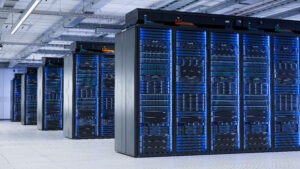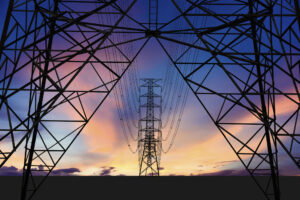Fueled by the enormous demand for digital services, the data centres are at the forefront of the global digital economy, experiencing unprecedented growth and transformation. As of August 2024, there are over 7,000 data centres worldwide, roughly double the amount in 2015. The number is expected to rise even further due to the proliferation of digital services, the expansion of cloud computing, and the growing reliance on data-driven technologies like AI. As reported in 2023 by the International Energy Agency (IEA), global data centres consume approximately 460 TWh of electricity annually, surpassing the total yearly electricity production of countries like Italy or Australia. This is equivalent to approximately 6% of the global electricity demand. The IEA projected that data centers' power use will increase to 1,050 TWh in 2026.
With this ongoing expansion, decarbonization emerges as an urgent focus due to the industry’s significant electricity use, prompting a shift towards renewable energy sources to reduce its energy consumption and carbon footprint.
Data Center Hubs around the World
Driven by advancements in cloud computing, artificial intelligence, big data, and IoT, the data center industry will continue to boom, requiring robust IT infrastructure to manage the enormous data volumes and computing requirements. The United States is currently the largest data center market with more than 2300 facilities, representing 33% of the global share (IEA), with Northern Virginia, Dallas and Silicon Valley identified as its main hubs by Visual Capitalist.
According to Statista, The Asia Pacific region follows, counting over 1700 facilities in 2024, with China leading the market with ~450 data centers. Germany and the UK account for ~30% of the European population (Statista), with the majority of data centers located in the financial centers of Frankfurt, London, Amsterdam, Paris, and Dublin.
In the European Union (EU), data center electricity consumption was estimated at slightly below 100 TWh in 2022, almost 4% of total EU electricity demand. With a significant number of additional data centres planned, and new deployments that can be expected to be realized over the coming years, the electricity consumption in the data centre sector in the EU is forecasted to reach almost 150 TWh by 2026 (IEA).
US data center electricity consumption is expected to grow rapidly in the coming years, increasing from around 200 TWh in 2022 (~4% of US electricity demand), to almost 260 TWh in 2026 to account for 6% of total electricity demand (IEA). Growth will be driven by increased adoption of 5G networks and cloud-based services, and competitive state tax incentives.
Governmental Incentives around the World
Companies often cite increasing costs as a barrier to addressing sustainability and decarbonization. To foster growth in the data center sector, governments worldwide are offering incentives—including tax breaks, reduced power costs, and grants—aiming to make their regions attractive for data center investments. US (e.g., federal tax incentives through the Inflation Reduction Act), Germany (e.g., grants from the Energy and Climate Fund to support energy-efficient data centers) and Ireland (e.g.,0% VAT rate on data center electricity usage) have emerged as preferred locations, thanks to their strategic initiatives to draw in developers with the promise of economic and infrastructural benefits.
Mandatory Disclosure in the EU
The data center sector’s substantial electricity demand cannot be ignored. As early as 2020, the European Commission highlighted the need for highly energy-efficient and sustainable data centers in its digital strategy report, ‘Shaping Europe's digital future’. The EU’s Energy Efficiency Directive (EED), a comprehensive legislative framework aimed at reducing energy consumption and promoting energy efficiency across various sectors in the EU, highlights the efforts needed in data centers in its 2022 recast. EU member states have two years to transpose most of the various elements of the directive into domestic law.
In the revised Directive (EU) 2023/1791, the EED significantly raises the EU energy efficiency target, making it binding for EU member states to collectively ensure an additional 11.7% reduction in energy consumption by 2030, compared to the projections of the EU reference scenario 2020. The revised EED also introduces a new obligation to monitor and report on the energy performance of data centers. Owners and operators of data centers with a power demand for the installed information technology of at least 500kW must publicly report on certain sustainability information.
The specific information and key performance indicators that data center operators need to disclose and the deadline by which this must be done are laid out in the EU Delegated Regulation for Data Centers 2024/1364, which was adopted by the EU Commission in March 2024 and entered into force in June 2024. The data to be disclosed includes energy consumption, temperature set points, waste heat utilization, water usage, and their use of renewable energy (split by on-site generation, PPA, and Guarantees of Origin). The information will be made public through a European database and used by the EU Commission to calculate performance indicators—such as Power Usage Effectiveness (PUE), Water Usage Effectiveness (WUE), Energy Re-use Factor (ERF) and Renewable Energy Factor (REF). Regarding the measurement of renewable energy usage, data center operators will have to disclose how much comes from Guarantees of Origin (GOs), Power Purchase Agreements (PPAs) and on-site generation (Commission Delegated Regulation (EU) 2024/1364, 14 March 2024). Moreover, data centers with a total rated power exceeding 1 MW must use their waste heat for heating purposes or other heat recovery applications—unless proven to be technically or economically unfeasible, with the purpose of reducing the amount of energy supplied from fossil fuels (Commission Delegated Regulation (EU) 2023/1791).
The revised EED and the Commission delegated act apply to all companies, including foreign ones, operating data centers within the EU. They come in addition to general energy efficiency measures aimed at reducing the overall energy consumption of data centers—such as optimizing cooling systems or using more energy-efficient equipment. The EU EED imposes minimum requirements to be transposed into member states’ national law, with some countries going beyond these. For instance, Germany has already transposed the directive, implementing even more stringent measures to promote sustainability and energy efficiency across industries, including data centers. As this trend expands globally, other regions, including the U.S. and APAC, are likely to adopt similar regulatory frameworks. In APAC, Singapore is already taking steps with voluntary initiatives like the SS 546 Green Data Center Standard, which defines performance metrics for energy efficiency and provides a standardized approach for tracking improvements. Such developments indicate a growing global momentum toward stricter regulations for data centers, signaling that other countries may follow suit with mandatory requirements to improve sustainability in this sector.
Green Data Centers
Amid growing environmental concerns, the data center industry is increasingly turning to renewable energy sources topower their operations. Innovations in data center development aimed at enhancing energy efficiency—such as advanced cooling systems, increased rack density, and modular construction—are gaining traction, aligning with the industry's sustainability objectives. Moreover, tech giants like Amazon, Microsoft, and Google are taking significant steps to power their global data centers sustainably through PPAs, VPPAs, or EACs: Amazon recently achieved 100% electricity matching with renewable sources, seven years ahead of its target; Microsoft plans to reach 100% renewable energy by 2025; and Google is going a step further, aiming for 24/7 carbon-free energy across all its operations by 2030. Solar, wind, hydro, and biomass are among the leading options adopted to diminish the sector's environmental footprint.
Beyond green power procurement, data centers can diversify their sustainability strategies by incorporating other renewable energy products offered by STX Group, such as biofuels and renewable gas for backup power generation. These alternatives provide reliable, low-carbon solutions for ensuring uptime during grid outages while reducing overall emissions. Additionally, data centers can extend their decarbonization efforts by engaging with their supply chains. For example, Amazon (according to its sustainability reports) is leading the way by working with its suppliers through programs like the Supplier Sustainability Program, which encourages the adoption of renewable energy and emissions reduction targets. They also support initiatives like Climate Pledge Friendly to promote eco-friendly products and use guidelines in their Responsible Sourcing and Supplier Code of Conduct to drive improvements in environmental practices. Such approaches help drive greater impact across the supply chain and set a precedent for integrating sustainability throughout all levels of operations. Companies of all sizes can make a global impact that is scalable for their unique operations and business models.
At STX Group, we advocate for companies globally to set science-based GHG emissions reduction targets that are in accordance with the Paris Agreement goals. Moreover, as recommended by the Science Based Targets initiative or ISO 14068, a thorough assessment of opportunities should be undertaken to reduce direct and value chain emissions in line with scientific standards.
As digitalization increasingly permeates society, the demand for data center services is expected to surge alongside innovation and environmental responsibility. With a variety of renewable energy procurement and optimization strategies available in the market, the future of this industry is not only bright but also sustainable, highlighting the industry's dual commitment to expansion and eco-friendly solutions.
Discover how STRIVE by STX can help you achieve your climate targets with our tailored decarbonization solutions for the telecommunications value chain.



